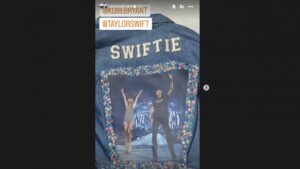In recent years, the landscape of influencer marketing has undergone a significant transformation with the emergence of virtual influencers and CGI avatars. These digital personas, meticulously crafted through advanced technologies, have gained substantial popularity and are reshaping the way brands engage with their target audiences. This article delves into the future of influencer marketing, exploring the benefits, challenges, and ethical considerations associated with virtual influencers.
Furthermore, it examines the growing trend of using CGI avatars in brand promotion and discusses their impact on consumer behavior. Finally, the article concludes by exploring how the integration of virtual and human influencers could shape the future of influencer marketing strategies. Get ready to explore the exciting world of virtual influencers and CGI avatars, and their potential to revolutionize brand promotion and consumer engagement.
1. Introduction: The Rise of Virtual Influencers and CGI Avatars
1.1 The Emergence of Virtual Influencers
Move over human influencers, there’s a new breed of influencers in town – virtual influencers. These digital creations have taken the social media world by storm, captivating audiences with their uncanny appearances and flawless personalities. Virtual influencers are computer-generated characters, brought to life through cutting-edge CGI technology. They have amassed millions of followers and are collaborating with major brands, making a splash in the influencer marketing scene.
1.2 CGI Avatars: A New Trend in Brand Promotion
Alongside virtual influencers, CGI avatars have also emerged as a popular tool for brand promotion. CGI avatars are digital representations of individuals or fictional characters, designed to convey a brand’s message or values. With their ability to be customized and animated, CGI avatars offer a unique and eye-catching way for brands to connect with their target audience. From product endorsements to storytelling campaigns, CGI avatars have become a trendsetting phenomenon in the world of marketing.
2. The Benefits of Virtual Influencers in Influencer Marketing
2.1 Enhanced Creative Control and Brand Consistency
One of the major advantages of collaborating with virtual influencers is the level of creative control brands have. Unlike human influencers, virtual influencers are entirely under the brand’s command, allowing for precise messaging and maintaining brand consistency. From specific poses and outfits to scripted content, brands can ensure that their message is articulated exactly as intended, without any unpredictable human factors getting in the way.
2.2 Access to New Audiences and Niche Markets
Virtual influencers have a distinct advantage when it comes to reaching new audiences. They appeal to a wide range of demographics and can engage with niche markets that may be difficult to target through traditional influencer marketing. With their perfectly curated personas and relatable characteristics, virtual influencers can attract followers who might be more hesitant to connect with human influencers, expanding a brand’s reach and market potential.
2.3 Cost-effectiveness and Longevity
Influencer marketing can often come with a hefty price tag. However, collaborating with virtual influencers can be a cost-effective alternative. Once created, virtual influencers do not require costly photoshoots, travel expenses, or even negotiation fees. With a one-time investment in their creation, brands can generate content endlessly, ultimately saving time and money. Additionally, virtual influencers do not suffer from burnout or aging, allowing brands to maintain enduring campaigns without worrying about inevitable human limitations.
3. The Growing Popularity of CGI Avatars in Brand Promotion
3.1 Creating Unique and Memorable Brand Image
CGI avatars offer brands an opportunity to stand out from the crowd and create a distinctive brand image. These digital representations provide a canvas for brands to experiment with visually captivating characters that embody their values and personality. By creating an avatar that reflects a brand’s essence, companies can leave a lasting impression on their audience and differentiate themselves in a cluttered marketplace.
3.2 Fostering Engagement and Storytelling
Storytelling is a powerful tool in marketing, and CGI avatars excel in bringing narratives to life. With their animated capabilities, brands can leverage CGI avatars to tell compelling stories that resonate with their audience. These avatars can guide viewers through brand journeys, and product demonstrations, or even entertain with relatable experiences, igniting engagement and emotional connections with consumers.
3.3 Amplifying Product Integration and Partnerships
CGI avatars can seamlessly integrate products into their digital worlds, making product placements feel natural and organic. With the ability to manipulate their surroundings and effortlessly showcase products, CGI avatars provide brands with unique opportunities for partnerships and collaborations. Whether it’s featuring clothing lines or showcasing cutting-edge technology, CGI avatars can enhance product visibility and create impactful associations.
4. Challenges and Ethical Considerations of Virtual Influencer Marketing
4.1 Disclosure and Transparency in Virtual Influencer Campaigns
Transparency is a crucial aspect of influencer marketing, and virtual influencers are no exception. As CGI creations, it is essential for brands to disclose their virtual influencer status, ensuring that audiences understand they are interacting with computer-generated entities rather than real individuals. Transparent and authentic communication is key to maintaining trust between brands, virtual influencers, and their followers.
4.2 Authenticity and Trustworthiness of Virtual Influencers
While virtual influencers may captivate audiences with their flawless appearances, maintaining authenticity and trustworthiness can be a challenge. Audiences often connect with human influencers because of their relatability and perceived authenticity. Brands must ensure that their virtual influencers are relatable and genuine in their interactions, avoiding the risk of alienating their audience through overly-perfect and unattainable personas.
4.3 Potential Negative Impact on Human Influencers
The rise of virtual influencers can potentially impact human influencers in the industry. As brands shift their focus towards CGI avatars and virtual influencers, human influencers may face increased competition and potential loss of brand partnerships. Brands must strike a balance between utilizing virtual influencers and continuing to support and collaborate with human influencers to maintain a diverse and inclusive influencer marketing landscape.
In conclusion, virtual influencers and CGI avatars are revolutionizing the world of influencer marketing. From enhanced creative control and access to new audiences to unique storytelling opportunities, the benefits are significant. However, brands must navigate ethical considerations and ensure transparency and authenticity in their virtual influencer campaigns. Balancing virtual and human influencers will be key to a thriving influencer marketing industry in the future.
5. The Impact of Virtual Influencers on Consumer Behavior
5.1 Influence of Virtual Influencers on Purchasing Decisions
When it comes to making purchasing decisions, virtual influencers are making a surprisingly big impact. Despite being digital creations, they have the power to sway consumer preferences and drive sales. Their charismatic personalities and flawless aesthetics make them relatable and aspirational figures, inspiring followers to want what they have. Whether it’s a trendy outfit, a must-have gadget, or a popular skincare product, virtual influencers can influence what consumers buy and where they spend their hard-earned money.
5.2 Building Emotional Connections with Virtual Influencers
It may sound strange, but virtual influencers are experts at building emotional connections with their audience. Through clever storytelling and relatable content, they establish a sense of trust and authenticity. Their virtual existence doesn’t hinder their ability to connect on an emotional level, as they understand human desires and fears just as well as any human influencer. By tapping into our emotions, virtual influencers can create a loyal following that is more than willing to engage with their content and support their brand partnerships.
5.3 Shaping Trends and Consumer Preferences
Virtual influencers are not just followers of trends; they have the power to shape them. With their unique sense of style and penchant for pushing boundaries, virtual influencers are at the forefront of setting new trends and influencing consumer preferences. By showcasing the latest fashion, beauty, and lifestyle choices, they become tastemakers in their own right. Brands that collaborate with virtual influencers gain access to this trendsetting power and can benefit from increased brand awareness and elevated status among consumers.
6. The Future of Influencer Marketing: Integrating Virtual and Human Influencers
6.1 Hybrid Approaches: Blending Virtual and Human Influencers
The future of influencer marketing lies in the seamless integration of virtual and human influencers. By combining the unique strengths of both, brands can create compelling campaigns that resonate with a wide range of audiences. Virtual influencers can bring a touch of fantasy and novelty, while human influencers provide a sense of authenticity and relatability. By blending these two worlds, brands can tap into different consumer segments and maximize their marketing impact.
6.2 Collaborative Campaigns: Virtual and Human Influencer Synergy
In the future, we can expect to see more collaborative campaigns that bring virtual and human influencers together. By teaming up, these influencers can leverage their respective strengths and create a synergy that captivates their audiences. The combination of a virtual influencer’s digital charisma and a human influencer’s genuine connection can result in powerful storytelling and increased brand engagement. Such collaborations offer endless opportunities for brands to create memorable and impactful campaigns.
6.3 Real-time Interactions: Humanizing Virtual Influencers
To bridge the gap between virtual and human influencers, real-time interactions will play a crucial role in the future of influencer marketing. Advancements in technology, such as artificial intelligence and augmented reality, will allow virtual influencers to engage with their audience in more immersive and lifelike ways. These interactions will humanize virtual influencers and enhance the emotional connection they have with their followers. Through live chats, virtual meet-and-greets, and virtual reality experiences, virtual influencers can break down the barrier between the digital and physical worlds.
7. Strategies for Collaborating with Virtual Influencers and CGI Avatars
7.1 Setting Clear Objectives and Target Audience
When collaborating with virtual influencers and CGI avatars, it’s essential to have clear objectives and identify your target audience. Define what you want to achieve through the collaboration and ensure that the virtual influencer aligns with your brand values and target market. Understanding your audience’s preferences and demographics will help you tailor your content and messaging to maximize engagement and drive desired actions.
7.2 Authentic Storytelling and Content Creation
Authenticity remains crucial, even when working with virtual influencers. Craft compelling and relatable stories that resonate with your target audience. Focus on creating content that feels genuine, human, and aligned with your brand identity. Whether it’s through captivating narratives, humor, or emotional connections, strive to create content that sparks meaningful conversations and leaves a lasting impact.
7.3 Leveraging Technology: AR, VR, and Beyond
Embrace the power of technology when collaborating with virtual influencers and CGI avatars. Augmented reality (AR), virtual reality (VR), and other innovative technologies provide opportunities for immersive experiences and creative executions. Experiment with these tools to enhance the virtual influencer’s interactions with your audience, whether it’s through AR try-on experiences, virtual events, or interactive campaigns. Embracing technology will not only capture attention but also demonstrate your brand’s forward-thinking approach.
8. Conclusion: Embracing the Evolution of Influencer Marketing
As we look ahead, it is evident that virtual influencers and CGI avatars are here to stay, transforming the influencer marketing landscape in unprecedented ways. Despite challenges and ethical considerations, their unique benefits are undeniable, from enhanced creative control and cost-effectiveness to access to new audiences and niche markets. The impact of virtual influencers on consumer behavior and their ability to create emotional connections cannot be overlooked. Moreover, the integration of virtual and human influencers opens up new possibilities for collaborative campaigns and real-time interactions. As brands navigate this evolving landscape, embracing the evolution of influencer marketing and leveraging the power of virtual influencers and CGI avatars will pave the way for exciting opportunities and successful brand promotion in the future.
FAQ
1. What are virtual influencers and CGI avatars?
Virtual influencers are computer-generated characters that are designed to resemble real people and interact with audiences on social media platforms. CGI avatars, on the other hand, are digital representations of individuals or fictional characters created using computer-generated imagery. Both virtual influencers and CGI avatars are used in influencer marketing to promote brands and engage with audiences.
2. How do virtual influencers benefit influencer marketing?
Virtual influencers offer several benefits for influencer marketing campaigns. They provide brands with enhanced creative control and brand consistency, as they can be customized to align perfectly with the brand’s image and messaging. Additionally, virtual influencers offer cost-effectiveness and longevity, as they do not require ongoing payment or face the limitations of human influencers, such as availability or changes in popularity.
3. What ethical considerations are associated with virtual influencer marketing?
Virtual influencer marketing raises ethical considerations regarding transparency and authenticity. Disclosure of a virtual influencer’s artificial nature is crucial to maintaining transparency with the audience. Additionally, maintaining authenticity can be a challenge, as virtual influencers are not real individuals with genuine experiences. Brands must navigate these ethical considerations to ensure trust and credibility with their audience.
4. How can virtual and human influencers be integrated for effective marketing strategies?
Integrating virtual and human influencers can create powerful marketing strategies. Brands can adopt hybrid approaches, blending the unique attributes of virtual and human influencers to reach a broader audience. Collaborative campaigns that bring virtual and human influencers together can create synergy and expand the impact of brand promotion. Real-time interactions, such as live streams or Q&A sessions, can be used to humanize virtual influencers and foster deeper connections with the audience.







